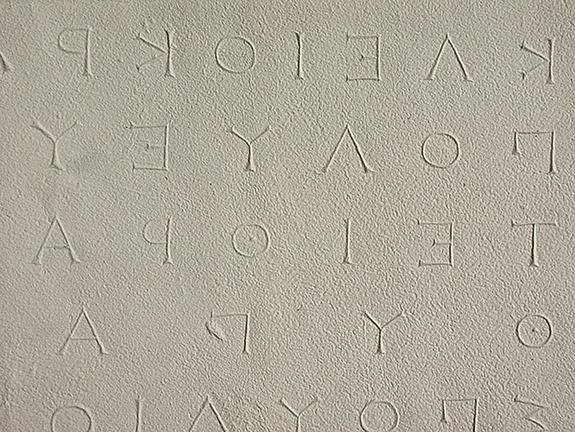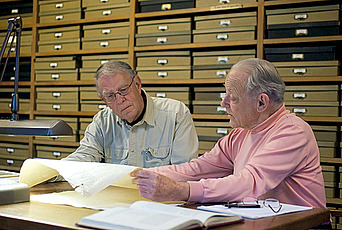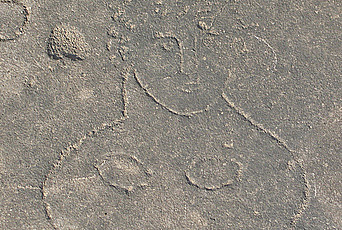What Are Squeezes and How Are They Used?

We do not know who made the first paper squeeze of an inscription. The practice is quite old; large numbers of them were made by Richard Lepsius on an expedition to Egypt (1842–45) and by Philippe Le Bas in Greece (1843). The invention of the squeeze must stem from the desire to acquire an accurate copy of the text of an inscription. Rubbings constitute a simpler, more rudimentary way of doing this. Photographs more recently provide an easy means of recording inscriptions, but each photograph is taken in a certain light. That lighting may not do justice to the inscription, or it may actually be misleading at places where the stone is difficult to decipher. A well-made squeeze provides the best and most accurate record of the state of the inscribed surface of an inscription. In the future, digital images may come to match them.
The term squeeze itself is not very elegant; the French estampage is more descriptively accurate of what they are. They are sort of papier-mâché impressions of inscriptions. They are made using acid-free chemists’ filter paper. The paper is wetted thoroughly and placed on the inscribed surface; then it is beaten with a long-bristled, specially made brush from the center out so that any air bubbles trapped under the paper may be worked out to the edges and dispersed. (Air bubbles not removed cause soft spots, places where the letters are unclear.) The squeeze is then allowed to dry on the stone. When removed, it provides a very accurate image of what is preserved on the inscribed face. It must be read from the back, and so the image is in reverse. (Students of inscriptions become very adept at reading backward!)
Inscribed stones naturally are often large and extremely heavy and thus quite awkward to handle and study. By contrast, squeezes, even of very large inscriptions, are light and easy to handle. Moreover, to read an inscription one usually needs to maneuver it around in the available light to show the letters to best advantage; this is not an easy proposition with many stones. In contrast, squeezes can be easily moved about to catch the lighting from various angles. Although no one would want to publish an inscription without being able to work from the stone, a good squeeze can allow one to do an all but final text of the inscription.
The Institute collection, located in Building B to the right of Fuld Hall, is one of the largest in the world and has been a valuable resource for scholars from all over who come here to consult it. The squeezes are easily accessible and allow visitors to study them in comfortable conditions with all the library resources close at hand. M. B. Hatzopoulos, for example, the Director of the Research Center for Greek and Roman Antiquity (National Hellenic Research Foundation), studied at the Institute in 1984 and 1987 the Edson squeezes from Macedonia and has made constant use of them in numerous publications ever since.
Large collections of squeezes have another very important advantage. They allow the possibility to browse through large numbers of inscribed texts quickly and easily. One can see more inscriptions in a day of browsing in a squeeze collection than one could see in a month trying to consult the stones that are often scattered in different museums and in different cities and countries. As an example, to pursue my study of the inscribers of Athenian decrees, I needed to examine all of the inscriptions of Athens and Attica. It is not, in fact, physically possible to do this in Athens. The squeeze collection at the Institute, particularly rich in squeezes of Athenian inscriptions, enabled the work to go forward. The results to date have been three books on Athenian inscribers covering the years 340 to 86 B.C. I am currently working on Athenian cutters of the late fifth and early fourth centuries B.C.


